This time I will bring you the use of the webpack refresh parsing function and what are the precautions for webpack refresh parsing. The following is a practical case, let's take a look.
The front end needs to frequently modify js and styles, and needs to be constantly adjusted according to the browser's page effect; and often our development directory and the local release directory are not the same, and we need to publish them after modification; another point That is, not all effects can be seen directly by double-clicking the page. We often need to use nginx to build a site locally to observe (it is ok on our own computer before putting it into the test environment). So if you have to manually refresh the browser and manually (or click) publish, and start the site, it is indeed a lot of physical work. And these three points webpack can help us do it.
webpack-dev-serverwebpack
realizes automatic refresh through webpack-dev-server (WDS). WDS is a development server (an express) running in memory. After starting, it will detect whether the file has changed and automatically compile again.
1. Installation
npm install webpack-dev-server --save-dev
First install it to the development directory through npm. After the installation is complete, it will be found under node_modules/bin.
2.npm start
Then modify package.json: (based on the previous section)
"scripts": {
"start": "webpack-dev-server --env development",
"build": "webpack --env production"
}
You can now run start through npm or npm start to start.

After starting, you can see that Project is running at http://localhost:8080. Opening the page

shows that WDS has automatically built a site for us. We modify component.js, compilation will appear in cmd, and the page will automatically refresh.

3. Start WDS directly
The official website introduces that you can start WDS directly through the following command.
webpack-dev-server --env development
But there will be a prompt that webpack-dev-server --env development is not an internal command. This kind of problem is a problem with environment variables. Just set the bin directory you developed to the environment variable, such as My directory is 'E:\Html5\node_modules\.bin', just add a semicolon at the end.
C:\Users\Administrator.9BBOFZPACSCXLG2\AppData\Roaming\npm;C:\Program Files (x86)\Microsoft VS Code\bin;E:\Html5\node_modules\.bin

4.8080 port occupation
If the default 8080 port is occupied, WDS will change it. For example, use nginx to publish one first.
server{
listen 8080;
location / {
root E:/Html5/build;
index index.html index.htm;
}
}
Restart WDS:

The port is switched to 8081. You can also manually configure the port:
devServer:{
//...
port: 9000
}
nodemon automatic startup
WDS monitors development files, and changes in webpack.config.js will not cause automatic startup. So we need nodemon to do this.
npm install nodemon --save-dev
First install it in the development directory, and then modify package.json:
"scripts": {
"start": "nodemon --watch webpack.config.js --exec \"webpack-dev-server --env development\"",
"build": "webpack --env production"
},
It is equivalent to letting nodemon monitor webpack.config.js and start it if it changes.

This way you can let your hands concentrate on development.
Agent
But I have a little doubt about the substitutability of the WDS site, because the nginx we deployed ourselves has some API proxies. If it is hung on the default site of WDS, it will naturally be inaccessible. In other words, can you configure a refresh path for WDS? If the file changes, refresh the specified address, or ask me to configure a proxy. Since it is an http server itself, it must also have proxy functions. After searching, it turned out to be: https://github.com/webpack/webpack-dev-server/tree/master/examples/proxy-advanced
module.exports = {
context: __dirname,
entry: "./app.js",
devServer: {
proxy: {
"/api": {
target: "http://jsonplaceholder.typicode.com/",
changeOrigin: true,
pathRewrite: {
"^/api": ""
},
bypass: function(req) {
if(req.url === "/api/nope") {
return "/bypass.html";
}
}
}
}
}
}
即将api这个字段替换成http://jsonplaceholder.typicode.com/,并将其从原地址中删掉,这样就可以自己实现代理了。皆大欢喜!WDS是通过http-proxy-middleware来实现代理。更多参考:http://webpack.github.io/docs/webpack-dev-server.html;https://github.com/chimurai/http-proxy-middleware#options
but,这种刷新是怎么实现的呢?因为页面上没有嵌入什么别的js,去翻原码 web-dev-server/server.js中有这么一段:
Server.prototype._watch = function(path) {
const watcher = chokidar.watch(path).on("change", function() {
this.sockWrite(this.sockets, "content-changed");
}.bind(this))
this.contentBaseWatchers.push(watcher);
}
用chokidar来监视文件变化,server的内部维护的有一个socket集合:
Server.prototype.sockWrite = function(sockets, type, data) {
sockets.forEach(function(sock) {
sock.write(JSON.stringify({
type: type,
data: data
}));
});
}
sock是一个sockjs对象。https://github.com/sockjs/sockjs-client,从http://localhost:8080/webpack-dev-server/页面来看,sockjs是用来通信记录日志的。
var onSocketMsg = {
hot: function() {
hot = true;
log("info", "[WDS] Hot Module Replacement enabled.");
},
invalid: function() {
log("info", "[WDS] App updated. Recompiling...");
sendMsg("Invalid");
},
hash: function(hash) {
currentHash = hash;
},
...
}
我们在看app.js,其中有一个OnSocketMsg 对象。
var onSocketMsg = {
hot: function() {
hot = true;
log("info", "[WDS] Hot Module Replacement enabled.");
},
invalid: function() {
log("info", "[WDS] App updated. Recompiling...");
sendMsg("Invalid");
},
hash: function(hash) {
currentHash = hash;
},
"still-ok": function() {
log("info", "[WDS] Nothing changed.")
if(useWarningOverlay || useErrorOverlay) overlay.clear();
sendMsg("StillOk");
},
"log-level": function(level) {
logLevel = level;
},
"overlay": function(overlay) {
if(typeof document !== "undefined") {
if(typeof(overlay) === "boolean") {
useWarningOverlay = overlay;
useErrorOverlay = overlay;
} else if(overlay) {
useWarningOverlay = overlay.warnings;
useErrorOverlay = overlay.errors;
}
}
},
ok: function() {
sendMsg("Ok");
if(useWarningOverlay || useErrorOverlay) overlay.clear();
if(initial) return initial = false;
reloadApp();
},
"content-changed": function() {
log("info", "[WDS] Content base changed. Reloading...")
self.location.reload();
},
warnings: function(warnings) {
log("info", "[WDS] Warnings while compiling.");
var strippedWarnings = warnings.map(function(warning) {
return stripAnsi(warning);
});
sendMsg("Warnings", strippedWarnings);
for(var i = 0; i <p style="text-align: left;">ok的时候触发一个reloadApp</p><pre class="brush:php;toolbar:false">function reloadApp() {
if(hot) {
log("info", "[WDS] App hot update...");
var hotEmitter = __webpack_require__("./node_modules/webpack/hot/emitter.js");
hotEmitter.emit("webpackHotUpdate", currentHash);
if(typeof self !== "undefined") {
// broadcast update to window
self.postMessage("webpackHotUpdate" + currentHash, "*");
}
} else {
log("info", "[WDS] App updated. Reloading...");
self.location.reload();
}
}也就是说WDS先检测文件是否变化,然后通过sockjs通知到客户端,这样就实现了刷新。之前WebSocket的第三方只用过socket.io,看起来sockjs也蛮好用的。不必外带一个js,在主js里面就可以写了。
小结:效率提高的一方面是将一些机械的重复性流程或动作自动化起来。WDS和nodemon就是两个为你干活的小弟。
相信看了本文案例你已经掌握了方法,更多精彩请关注php中文网其它相关文章!
推荐阅读:
The above is the detailed content of Use of webpack refresh parsing function. For more information, please follow other related articles on the PHP Chinese website!
 使用Python和WebDriver实现网页自动刷新Jul 08, 2023 pm 01:46 PM
使用Python和WebDriver实现网页自动刷新Jul 08, 2023 pm 01:46 PM使用Python和WebDriver实现网页自动刷新引言:在日常的网页浏览中,我们常常会遇到需要频繁刷新网页的场景,比如监控实时数据、自动刷新动态页面等。手动刷新网页会浪费大量的时间和精力,因此我们可以使用Python和WebDriver来实现自动刷新网页的功能,提高我们的工作效率。一、安装和配置环境在开始之前,我们需要安装和配置相应的环境。安装Python
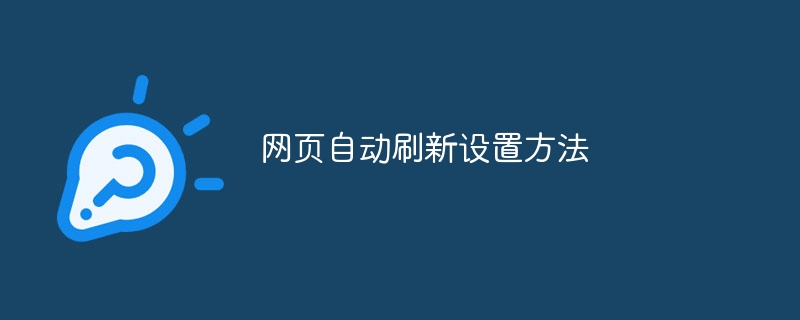 网页自动刷新设置方法Oct 26, 2023 am 10:52 AM
网页自动刷新设置方法Oct 26, 2023 am 10:52 AM设置网页的自动刷新可以使用HTML的“meta”标签、JavaScript的“setTimeout”函数、“setInterval”函数或HTTP的”Refresh“头。详细介绍:1、使用HTML的“meta”标签,在HTML文档的“<head>”标签中,可以使用“meta”标签来设置网页的自动刷新;2、JavaScript的“setTimeout”函数等等。
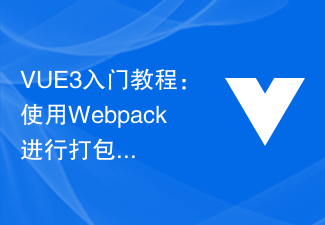 VUE3入门教程:使用Webpack进行打包和构建Jun 15, 2023 pm 06:17 PM
VUE3入门教程:使用Webpack进行打包和构建Jun 15, 2023 pm 06:17 PMVue是一款优秀的JavaScript框架,它可以帮助我们快速构建交互性强、高效性好的Web应用程序。Vue3是Vue的最新版本,它引入了很多新的特性和功能。Webpack是目前最流行的JavaScript模块打包器和构建工具之一,它可以帮助我们管理项目中的各种资源。本文就为大家介绍如何使用Webpack打包和构建Vue3应用程序。1.安装Webpack
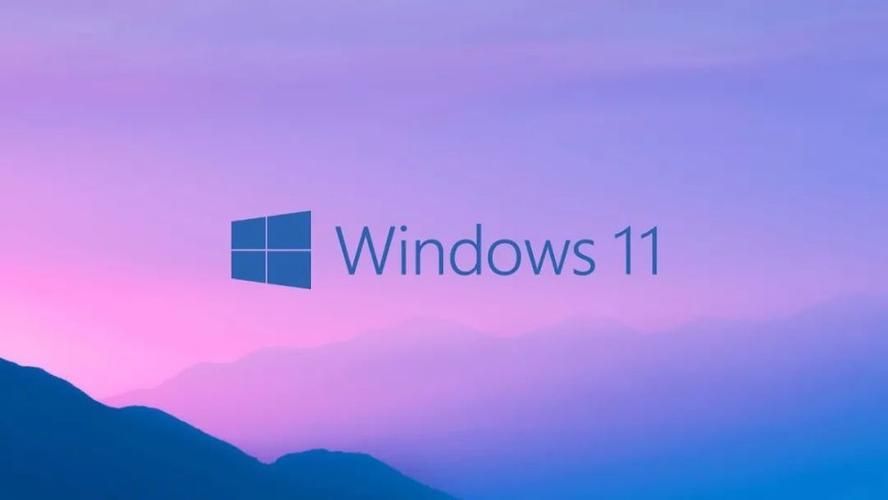 win11桌面经常自动刷新怎么办Jun 29, 2023 pm 02:56 PM
win11桌面经常自动刷新怎么办Jun 29, 2023 pm 02:56 PMwin11桌面经常自动刷新怎么办?win11系统是微软推出的最新Windows系统,拥有最新的技术构建,能够提供给你最新的优质服务,但同时,也存在着一些新型的问题。最近有小伙伴反应,win11在更新之后就经常出现桌面不断刷新的现象,这很有可能是因为系统出现了一些问题,那么,我们究竟该怎么解决这个问题呢?下面就由小编为大家带来win11桌面经常自动刷新解决方法。win11桌面经常自动刷新解决方法方法一:卸载更新1、首先我们使用键盘“ctrl+shift+esc”组合键打开任务管理器。2、打开后点击
 vite和webpack的区别是什么Jan 11, 2023 pm 02:55 PM
vite和webpack的区别是什么Jan 11, 2023 pm 02:55 PM区别:1、webpack服务器启动速度比vite慢;由于vite启动的时候不需要打包,也就无需分析模块依赖、编译,所以启动速度非常快。2、vite热更新比webpack快;vite在HRM方面,当某个模块内容改变时,让浏览器去重新请求该模块即可。3、vite用esbuild预构建依赖,而webpack基于node。4、vite的生态不及webpack,加载器、插件不够丰富。
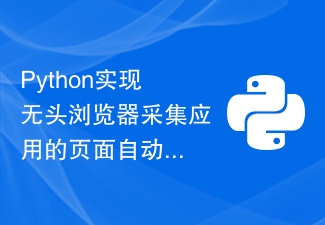 Python实现无头浏览器采集应用的页面自动刷新与定时任务功能解析Aug 08, 2023 am 08:13 AM
Python实现无头浏览器采集应用的页面自动刷新与定时任务功能解析Aug 08, 2023 am 08:13 AMPython实现无头浏览器采集应用的页面自动刷新与定时任务功能解析随着网络的快速发展和应用的普及,网页数据的采集变得越来越重要。而无头浏览器则是采集网页数据的有效工具之一。本文将介绍如何使用Python实现无头浏览器的页面自动刷新和定时任务功能。无头浏览器采用的是无图形界面的浏览器操作模式,能够以自动化的方式模拟人类的操作行为,从而实现访问网页、点击按钮、填
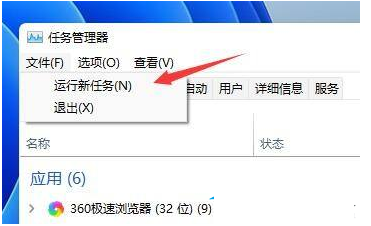 如何解决Win11桌面自动刷新的问题Jan 09, 2024 am 09:57 AM
如何解决Win11桌面自动刷新的问题Jan 09, 2024 am 09:57 AM虽然Win11系统已经推出很长一段时间了,但我们在使用的过程中还是会遇到很多问题,例如有的小伙伴们在使用过程中经常会遇到屏幕桌面一直自动刷新的情况,这时候要如何解决呢?下面就和小编一起来看看解决方法吧。Win11桌面自动刷新的解决方法1、首先我们使用键盘“ctrl+shift+esc”组合键打开任务管理器。2、打开后点击左上角的“文件”,并选择其中的“运行新任务”。3、然后勾选“以系统管理权限创建此任务”选项,
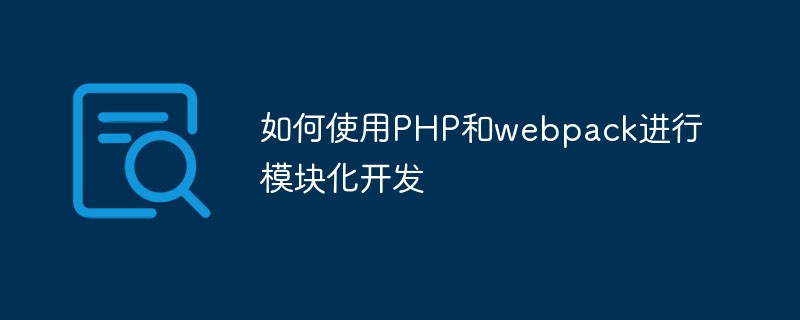 如何使用PHP和webpack进行模块化开发May 11, 2023 pm 03:52 PM
如何使用PHP和webpack进行模块化开发May 11, 2023 pm 03:52 PM随着Web开发技术的不断发展,前后端分离、模块化开发已经成为了一个广泛的趋势。PHP作为一种常用的后端语言,在进行模块化开发时,我们需要借助一些工具来实现模块的管理和打包,其中webpack是一个非常好用的模块化打包工具。本文将介绍如何使用PHP和webpack进行模块化开发。一、什么是模块化开发模块化开发是指将程序分解成不同的独立模块,每个模块都有自己的作


Hot AI Tools

Undresser.AI Undress
AI-powered app for creating realistic nude photos

AI Clothes Remover
Online AI tool for removing clothes from photos.

Undress AI Tool
Undress images for free

Clothoff.io
AI clothes remover

AI Hentai Generator
Generate AI Hentai for free.

Hot Article

Hot Tools

Safe Exam Browser
Safe Exam Browser is a secure browser environment for taking online exams securely. This software turns any computer into a secure workstation. It controls access to any utility and prevents students from using unauthorized resources.

SublimeText3 Linux new version
SublimeText3 Linux latest version

VSCode Windows 64-bit Download
A free and powerful IDE editor launched by Microsoft

Atom editor mac version download
The most popular open source editor

SublimeText3 Mac version
God-level code editing software (SublimeText3)






